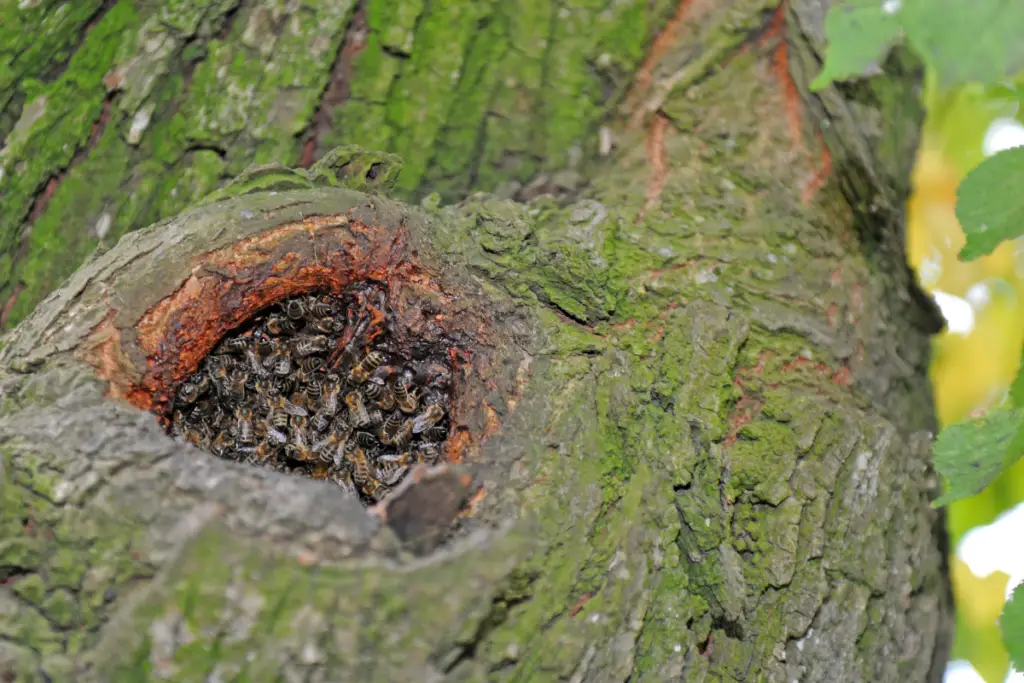No, there is no such thing as a king bee.
A queen bee rules over honey bees and bumble bees. Male bees are purely there to mate, and some pay for it with their life.
But why no king? Let’s take a closer look at bees and how they organise their colonies, with female bees at the top.
Why Don’t Bees Have Kings?
To put it simply, bees don’t need a king.
They don’t lay eggs, care for young, forage or defend the hive. They’re only there to mate with a queen bee. After that, their role is complete.
Queens only mate once, so there’s only a limited demand for male drone bees.
So much so that male honey bees are often ejected from the hive during winter because they are an unnecessary drain on the nest’s resources.
When it comes to honey bees, the males are killed during mating, so they can’t return to their nest after a successful mating flight.
It’s also important to note that the idea of kings and queens is uniquely human.
Bees existed long before we did, and our social constructs don’t apply to the insect world.
Why Do Bees Have Queens Instead?
Unlike their male counterparts, female bees are essential to the growth and prosperity of honey and bumble bee colonies.
They’re split into roles like scout, nurse and guard bees, but only one female will become a queen bee and take up her role as matriarch.
She is the hive’s heart, primarily responsible for laying eggs she uses her unique pheromones to maintain harmony and order within the hive, guiding the behaviour of worker bees.
In a healthy hive, a queen bee can lay up to 2,000 eggs daily during peak seasons.
This remarkable feat is essential for replacing ageing or lost workers and expanding the colony. The presence of a fertile and active queen is key to the hive’s overall health and productivity.
A king bee wouldn’t be able to carry out any of these activities, and it would quickly lead to the colony’s collapse.
Do Solitary Bees Have A King?
As their name suggests, Solitary bees lead a very different life than their social counterparts, like honeybees and bumblebees.
In the world of solitary bees, there are no queens or kings. Each female solitary bee operates independently and is responsible for her own nest-building, egg-laying, and provisioning of food for her offspring.
Female mason bees meticulously construct individual cells within their nest, each containing an egg and a supply of pollen and nectar.
They’ll make sure to lay some male eggs for the following season.
Males typically emerge before females and wait near the nesting sites. Once the females appear in Spring, mating occurs usually in the air or on nearby flowers.

Do Any Kinds Of Insects Have a King?
In the intricate and diverse world of insects, the concept of a “king” like that found in some animal societies doesn’t really exist.
Insect societies, especially in eusocial species like ants and bees, are generally matriarchal.
The roles are centred around a queen responsible for reproduction, while the males (drones in bees, for instance) have the primary role of mating with the queen.
The Exception To The Rule
Termites somewhat break this rule in the life cycle and hierarchy of their colonies, with a focus on reproduction and colony expansion.
The queen, often much larger than other termites due to her enlarged abdomen, is the primary egg-layer in the colony.
The king, although less discussed, is equally vital. After a nuptial flight, where young queens and kings from various colonies meet and mate, the termite king stays with his chosen queen for life.
Unlike in bee colonies, where the male dies after mating, the termite king continuously fertilizes the queen’s eggs over many years.
This lifelong partnership is unique among many insect societies. Together, the king and queen form the colony’s heart, with their offspring making up the workers, soldiers, and future reproductive termites that sustain and defend the colony.
Their long-term bond and joint effort in colony building are remarkable examples of cooperation and specialization in the insect world.




